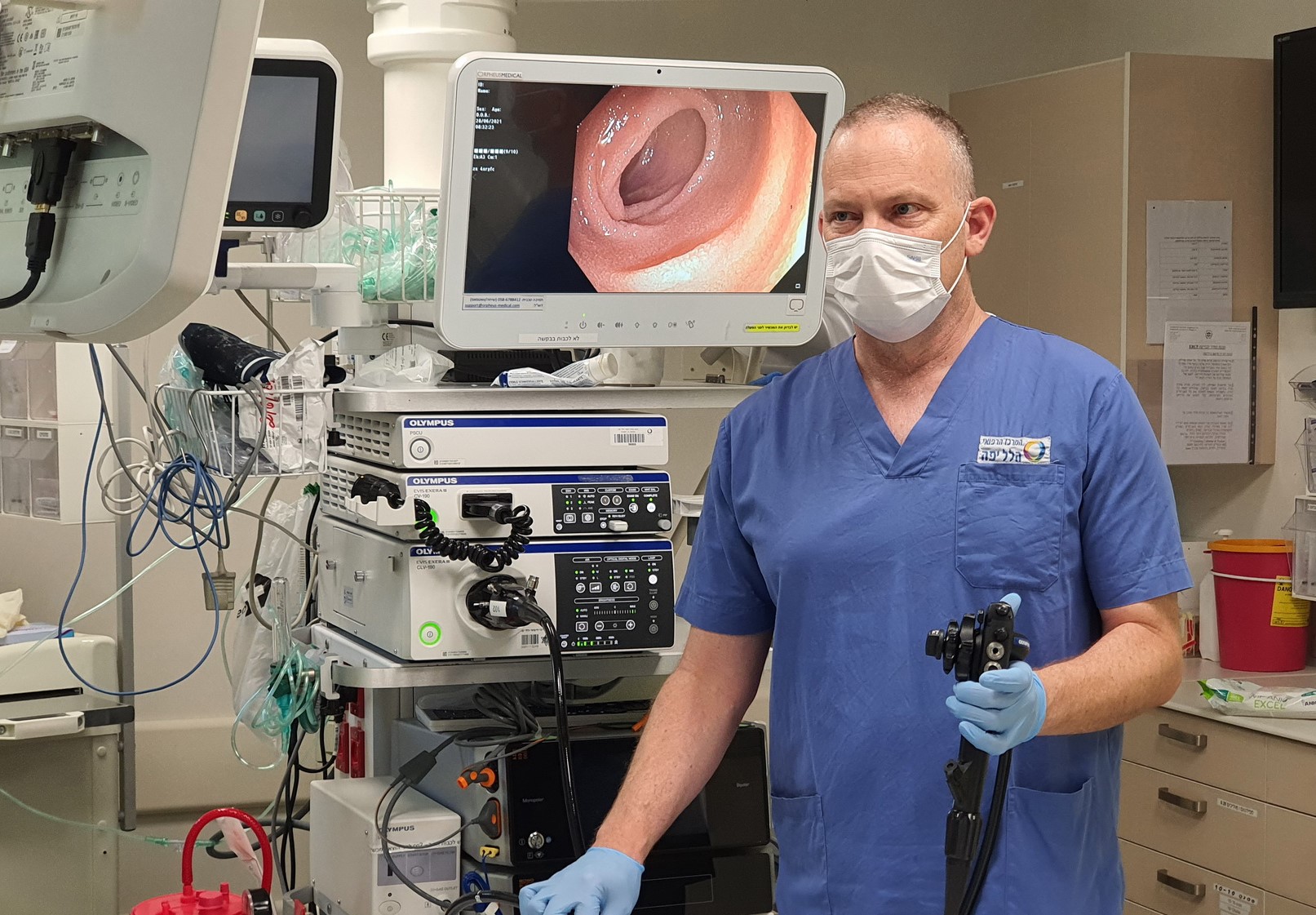At Hillel Yaffe Medical Center’s Gastroenterology Institute, doctors have begun to use the most advanced unique instrument in the world for examining the small intestine. This technology is intended to help with diagnosis of various diseases which involve the small intestinal mucus layer, including inflammatory diseases, and enable an exact diagnosis of ulcers, polyps, and suspected malignancies – by taking a sampling of the tissue (biopsy). In addition, the technology enables treatment of hemorrhaging vascular lesions, removal of polyps, and more.
There are currently several methods of photographing the small intestinal mucus layer, ranging from swallowing a tiny capsule containing a camera to an endoscopy which inserts a flexible scope (endoscope) with a camera at its end. Another method, enteroscopy, was previously carried out by using an endoscope which was slightly longer than the usual (enteroscope); however, the ability to capture images of the small intestine deep into the area in this way was limited. Another technique is enteroscopy using one or two balloons at the end of the endoscope. However, the most state-of-the-art technology is spiral enteroscopy.

It is not for nothing that there are several methods used to examine the small intestine. The anatomical structure of the small intestine makes it difficult to scan, due both to its length (around six meters [3.3 feet]) and its being “folded up” in the abdominal cavity. The entry of innovative and accepted methods, such as the double-balloon enteroscopy, provided a partial solution, although it was technically complex, in light of the need to inflate one or more balloons within the small intestine in order to progress as well as the need for a large team including, among others, two gastroenterologists, and a relatively long testing time.
The innovative method, the “motorized spiral enteroscopy”, makes use of an endoscope with a motorized spiral slid over it, which, while rotating, “lifts up” the small intestine and allows its examination. “Lifting up the small intestine” over the endoscope enables deeper penetration along the length of the intestine and a more accurate diagnosis.
Director of the Advanced Endoscopy Unit at the Hillel Yaffe Medical Center, Dr. Oren Gal: “This innovative technology exists today in a limited number of medical centers in Israel, including here, at Hillel Yaffe’s Gastroenterology Institute. The motorized spiral enteroscopy enable us to provide a more focused and meticulous service for our patients and helps us overcome one of the greatest problems when examining the small intestine. This technique enables a more comprehensive examination of the small intestine, takes less time, enables tissue sampling for a more precise diagnosis in the case of suspicious findings and even cauterization of vascular lesions (tiny swollen veins). In addition, lesions (polyps) can be removed in real time.”







.jpg?BannerID=39)

